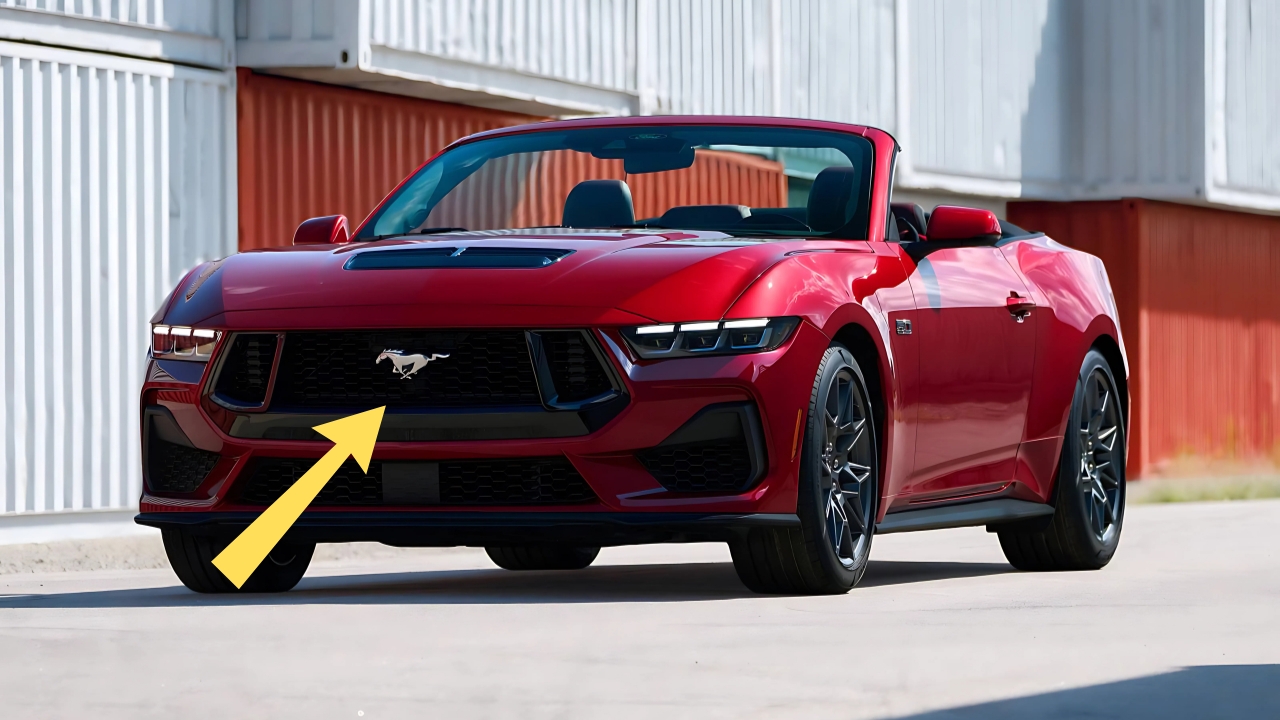The Ford Mustang has roared back to prominence in Australia, securing its position as the nation’s top-selling sports car with an impressive 720 deliveries in May 2025. This marks the best monthly performance for the current ‘S650’ generation since its introduction in 2024, despite significant price increases. The iconic muscle car’s resurgence reflects its enduring appeal, blending classic design with modern performance, and signals a strong demand for performance vehicles in the Australian market. This article delves into the factors behind this sales success, the Mustang’s market positioning, and what it means for Ford’s future in Australia.
A Resurgent Icon
The Ford Mustang has long been a symbol of automotive freedom, and its latest sales figures underscore its continued relevance. In May 2025, the Mustang achieved 720 sales, a feat not seen since its peak in May 2017, when it recorded 1,351 deliveries. This recent performance is particularly notable given the challenges posed by price hikes and a shifting automotive landscape increasingly favoring electric and hybrid vehicles. The Mustang’s ability to reclaim its crown as Australia’s best-selling sports car highlights its unique position in a market where performance and heritage still resonate with buyers.
The S650 Generation: What’s New?
The current ‘S650’ Mustang, introduced in 2024, brought a refreshed design, updated technology, and enhanced performance. This seventh-generation model features sharper styling, a more aggressive stance, and a tech-heavy interior with a digital cockpit. Available in both coupe and convertible variants, the Mustang caters to a wide range of enthusiasts, from those seeking the raw power of the 5.0-litre V8 to buyers opting for the more accessible 2.3-litre EcoBoost four-cylinder. Despite these updates, the new generation came with a price increase of around $10,000 compared to its predecessor, followed by additional rises of $915 to $2,000 for the 2025 model year (MY25). Yet, these higher costs have not deterred buyers, as evidenced by the strong sales figures.
Pricing and Variants
The 2025 Mustang lineup starts at $66,990 before on-road costs for the EcoBoost coupe with a 10-speed automatic. For those craving the classic V8 experience, the 5.0-litre V8 model begins at $78,990 with a six-speed manual, with the automatic option adding $3,000. These prices reflect Ford’s strategy to position the Mustang as a premium sports car, competing with rivals like the Toyota GR Supra and Nissan Z. The sales success suggests that Australian buyers are willing to pay for the Mustang’s blend of heritage, performance, and modern features.
Factors Driving Sales

Several factors have contributed to the Mustang’s remarkable performance in May 2025. Understanding these elements provides insight into why this iconic vehicle continues to dominate the sports car segment.
Brand Loyalty and Heritage
The Mustang’s legacy, spanning over six decades, is a significant draw for Australian buyers. Its reputation as a symbol of power and freedom resonates with enthusiasts who value its heritage. Ford’s marketing has leaned heavily into this nostalgia, with campaigns emphasizing the Mustang’s storied history while showcasing its modern capabilities. This blend of old-school charm and contemporary performance has helped maintain strong brand loyalty, even in the face of rising prices.
Performance Appeal
The Mustang’s performance credentials remain a key selling point. The 5.0-litre V8 delivers exhilarating power, while the EcoBoost offers a more affordable entry into the Mustang experience without sacrificing driving dynamics. The availability of both manual and automatic transmissions caters to purists and casual drivers alike. Additionally, the S650’s refined suspension and handling make it a compelling choice for those seeking a thrilling drive, whether on city streets or winding country roads.
Market Dynamics
The Australian automotive market has seen a shift toward electric vehicles (EVs) and hybrids, with EV sales projected to reach 20 million globally in 2025. However, the Mustang’s success suggests that there remains a strong appetite for traditional performance cars. While EV sales in Australia have stagnated at 5.9% of the market in April 2025, the Mustang’s sales indicate that buyers are still drawn to the visceral experience of a combustion-engine sports car. This is particularly true in a market where plug-in hybrids have nearly doubled in sales, yet the Mustang’s unique positioning sets it apart.
Challenges and Comparisons
Despite its success, the Mustang faces challenges in a rapidly evolving market. The price increases have raised eyebrows, with some questioning whether the Mustang can maintain its momentum. Additionally, its sales figures, while impressive, are still below the peak of 9,165 units in 2017, when it was second only to the Ford Ranger in the brand’s lineup. Comparing the current 720 deliveries in May 2025 to the 1,351 in May 2017 shows there’s still ground to cover to reach those heights.
Competition in the Sports Car Segment

The Mustang competes in a niche but competitive segment. Rivals like the Toyota GR Supra, Nissan Z, and even premium offerings from BMW and Porsche vie for the same buyers. However, the Mustang’s combination of relatively accessible pricing (compared to European brands) and its iconic status give it an edge. Its versatility, with both four-cylinder and V8 options, also broadens its appeal compared to competitors that often focus on a single powertrain.
The Electric Question
Ford’s electric offering, the Mustang Mach-E, has struggled in Australia, with only 181 sales in the first four months of 2025, down from 673 in 2024. This contrasts sharply with the combustion Mustang’s success, suggesting that Australian buyers prefer the traditional Mustang experience over its electric counterpart. Recent price cuts of up to $12,000 on the Mach-E indicate Ford’s efforts to boost its EV sales, but the traditional Mustang remains the star of the lineup.
Looking Ahead
With a monthly average of 498 cars in 2025, the Mustang is on track to surpass its 2020 and 2021 annual totals of 2,923 and 2,827, respectively. If this trend continues, Ford could see its best annual Mustang sales since the 2017 peak. The company’s ability to maintain this momentum will depend on its ability to balance pricing, market demand, and competition from both traditional and electric vehicles. Ford’s focus on performance, coupled with strategic marketing, positions the Mustang well for continued success.
Ford’s Broader Strategy
Ford’s success with the Mustang contrasts with its challenges in the EV market. While the Mustang Mach-E struggles, Ford’s pickup trucks, like the F-150 Lightning, have also seen declining sales globally. This suggests that Ford’s strength in Australia lies in its combustion-engine vehicles, particularly the Mustang and Ranger. Moving forward, Ford may need to refine its EV strategy while continuing to capitalize on the Mustang’s appeal to maintain its market share.
FAQs
What is the starting price of the 2025 Ford Mustang in Australia?
The 2025 Ford Mustang starts at $66,990 before on-road costs for the EcoBoost coupe with a 10-speed automatic. The V8 model begins at $78,990 with a six-speed manual.
How many Mustangs were sold in Australia in May 2025?
The Ford Mustang recorded 720 deliveries in May 2025, its best monthly performance since the S650 generation’s launch in 2024.
Why is the Mustang so popular in Australia?
The Mustang’s popularity stems from its iconic design, powerful performance options, and strong brand heritage, appealing to enthusiasts despite higher prices.
The Ford Mustang’s resurgence in May 2025, with 720 deliveries, marks a significant milestone for the iconic sports car. Despite price increases and a growing focus on EVs, the Mustang’s blend of heritage, performance, and modern technology continues to captivate Australian buyers. As Ford navigates a competitive and evolving market, the Mustang’s success underscores its enduring appeal and sets the stage for a strong year ahead. Whether it can sustain this momentum and approach its 2017 peak remains to be seen, but for now, the Mustang is once again Australia’s favorite sports car.

